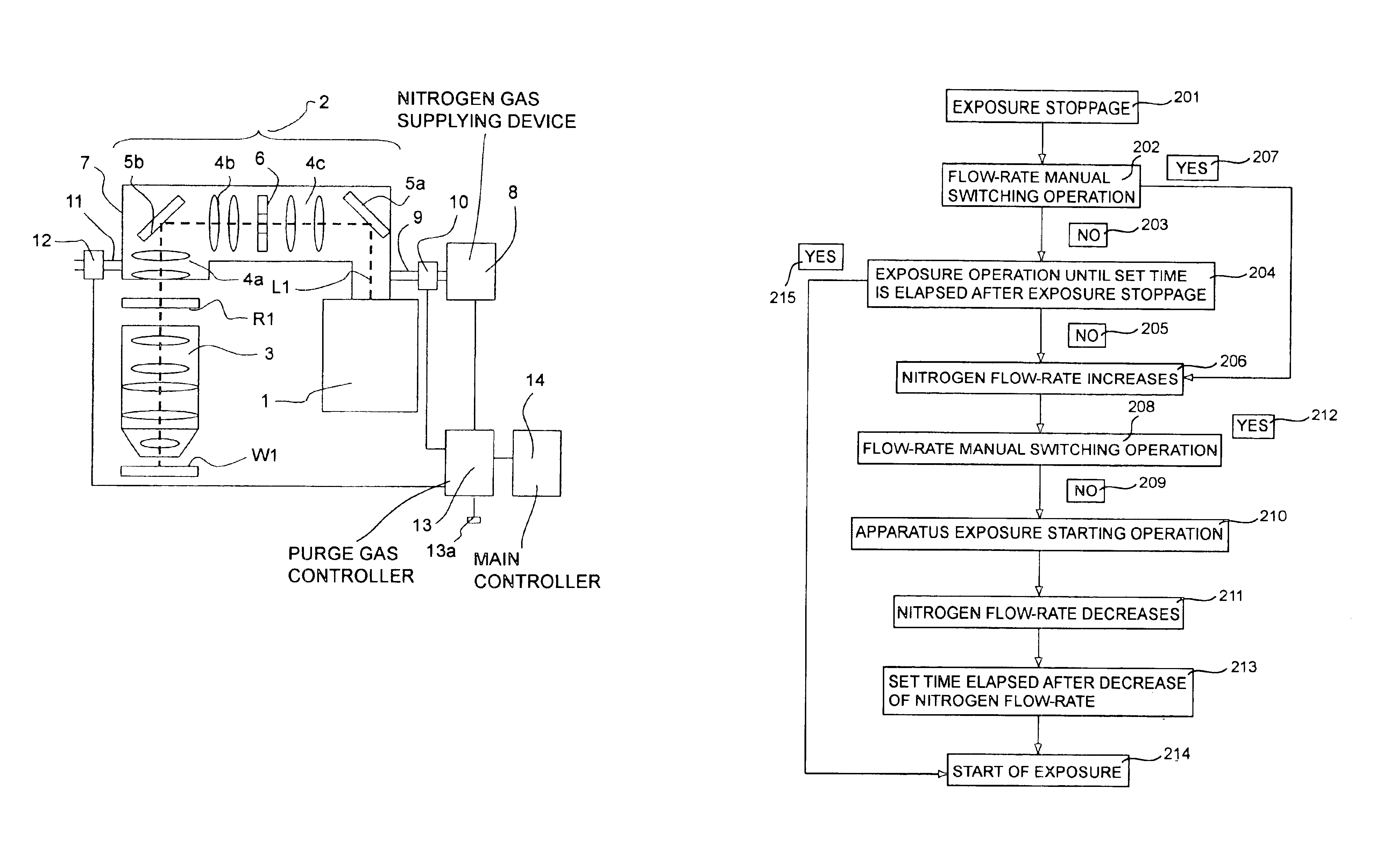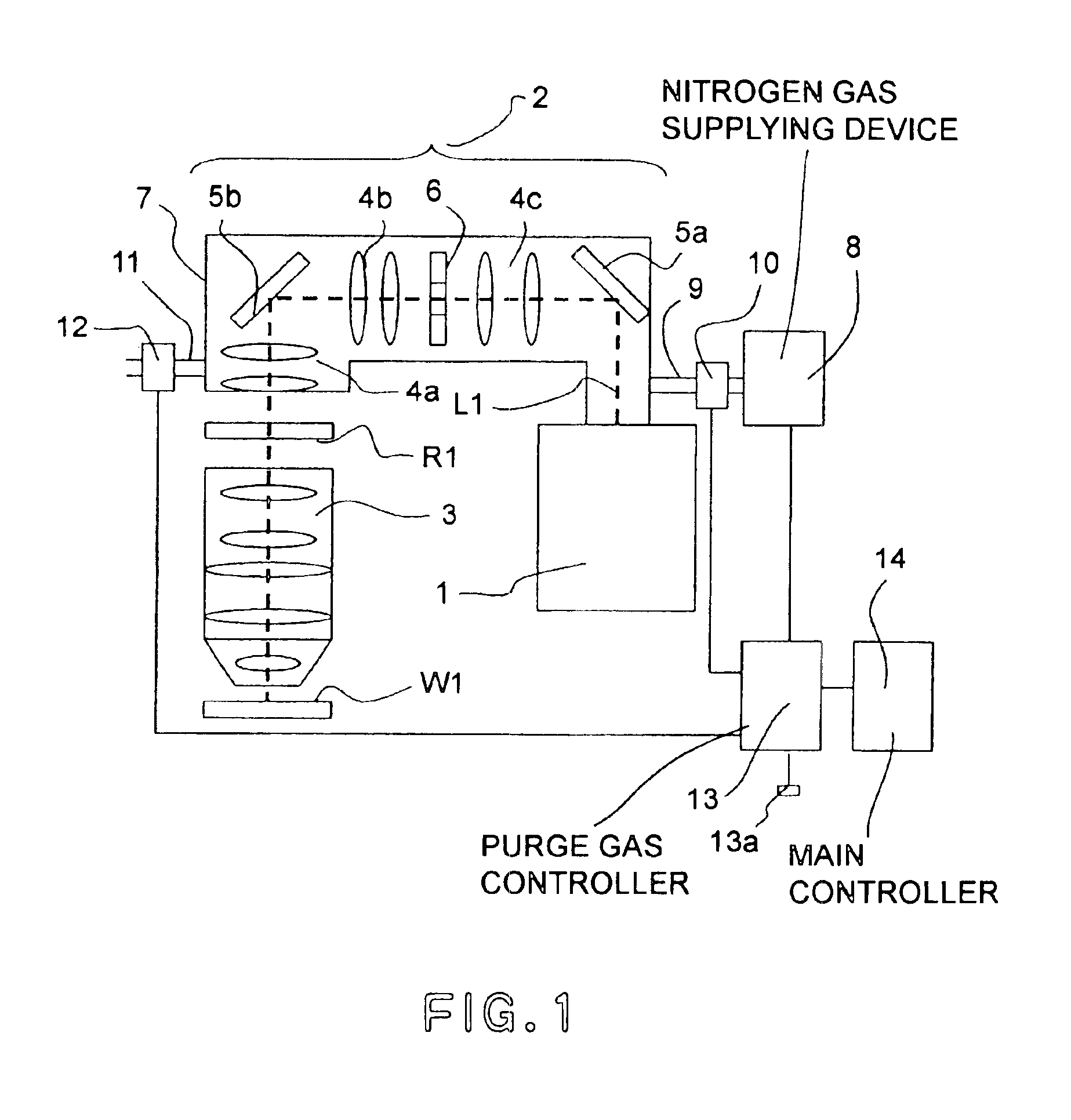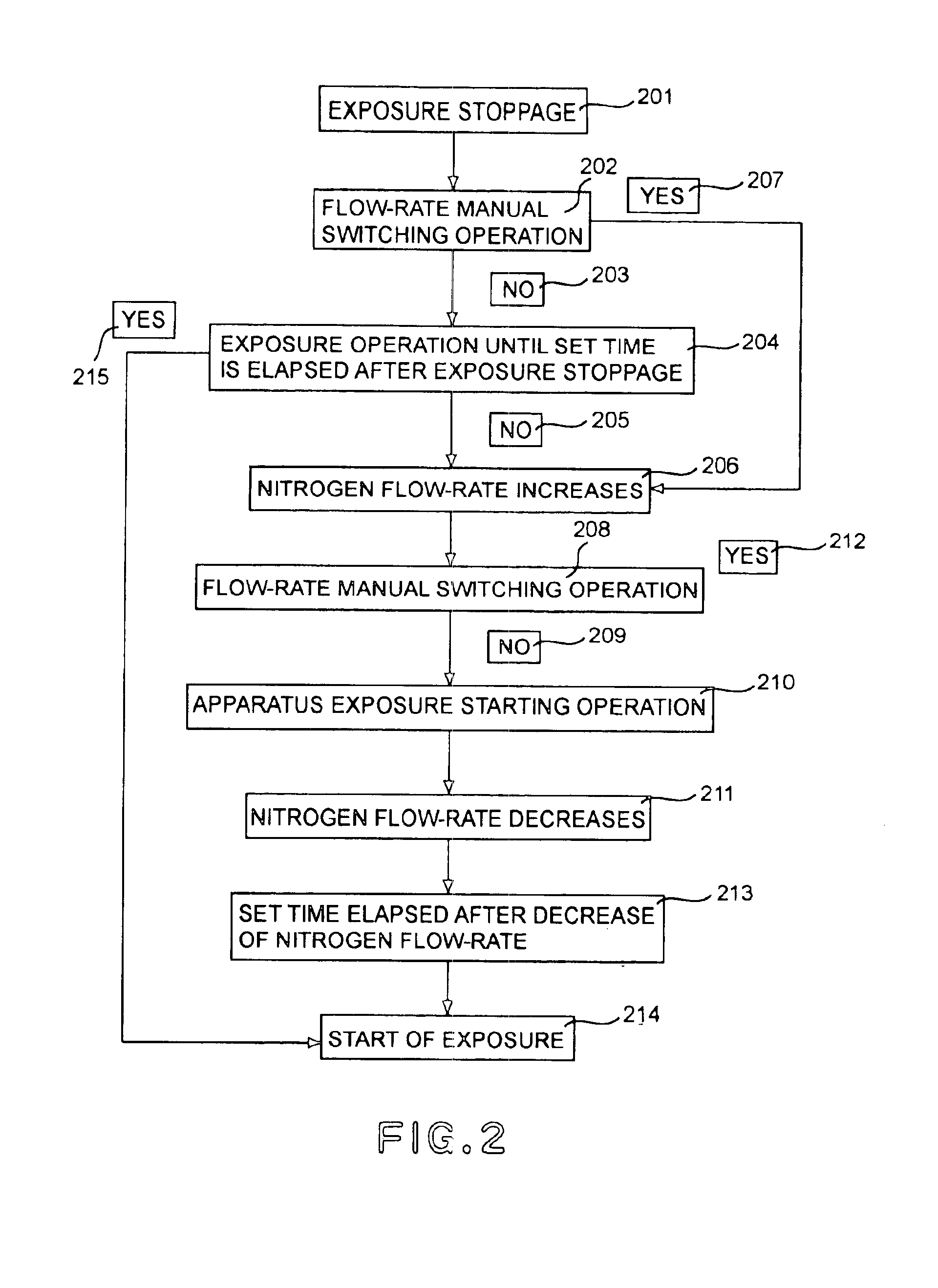Exposure apparatus and purging method for the same
a technology of purging method and exposure apparatus, which is applied in the direction of photomechanical apparatus, printing, instruments, etc., can solve the problems of only a small amount of impurities left in the purged space, the non-transparent “blur” of glass materials, and the influence of only a small amount of impurities, etc., to increase the molecular amount of emission gas, increase the flow rate, and reduce the effect of flow ra
- Summary
- Abstract
- Description
- Claims
- Application Information
AI Technical Summary
Benefits of technology
Problems solved by technology
Method used
Image
Examples
first embodiment
[First Embodiment]
[0024]FIG. 1 illustrates an exposure apparatus according to a first embodiment of the present invention. In FIG. 1, denoted at 1 is a light source which comprises an excimer laser, and denoted at 2 is a light source lens system which is an optical system for shaping laser light L1, emitted from the light source 1, into a predetermined shape. Denoted at 3 is a projection lens system for imaging the laser light L1, shaped into a predetermined shape by the lens system 2, upon a wafer (substrate) W1 through a reticle R1.
[0025]The light source lens system 2 comprises optical elements such as different types of lens groups 4a, 4b and 4c and mirrors 5a and 5b, and it has a function for illuminating an illumination region on the reticle with the laser light L1 from the light source 1, with uniform illuminance. Also, it includes a sub-unit such as blind means 6 having a function for defining the shape (exposure view angle) of the illumination region on the reticle R1. The l...
second embodiment
[Second Embodiment]
[0030]FIG. 3 shows an exposure apparatus according to a second embodiment of the present invention. The elements having the same functions as those of the FIG. 1 embodiment are denoted by like numerals, and a description thereof is omitted. The difference of this embodiment from the first embodiment will be described. In the first embodiment, in the exposure period and the non-exposure period, the nitrogen flow rate to be supplied is controlled to constant values set beforehand. In the second embodiment, on the other hand, gas analyzers 15 and 16 are connected to the nitrogen outlet port, and obtained values are fed back to calculate optimum nitrogen flow rates for the exposure period and the non-exposure period such that the flow rate is controlled with respect to these values.
[0031]Referring to FIG. 3, details will be explained. In FIG. 3, the basic structure is the same as that shown in FIG. 1. However, although in FIG. 1 the nitrogen passed through the casing ...
third embodiment
[Third Embodiment]
[0033]FIG. 5 shows an exposure apparatus according to a third embodiment of the present invention. The elements having the same functions as those of the FIG. 3 embodiment are denoted by like numerals, and a description thereof is omitted. The difference of this embodiment from the second embodiment will be described. In the second embodiment, the light source lens system is purged by nitrogen. In the third embodiment, on the other hand, a projection lens system is purged by nitrogen. In the case of a projection lens system, as compared with a light source lens system, any change in inside pressure will have a large influence upon the image performance such as magnification or distortion. In consideration of this, a variable restriction 19 is provided in a gas exhaust line 11 to change the piping resistance at the nitrogen outlet port in accordance with the nitrogen supply amount, thereby preventing a change in inside pressure (gauge pressure) due to a change in fl...
PUM
 Login to View More
Login to View More Abstract
Description
Claims
Application Information
 Login to View More
Login to View More - R&D
- Intellectual Property
- Life Sciences
- Materials
- Tech Scout
- Unparalleled Data Quality
- Higher Quality Content
- 60% Fewer Hallucinations
Browse by: Latest US Patents, China's latest patents, Technical Efficacy Thesaurus, Application Domain, Technology Topic, Popular Technical Reports.
© 2025 PatSnap. All rights reserved.Legal|Privacy policy|Modern Slavery Act Transparency Statement|Sitemap|About US| Contact US: help@patsnap.com



